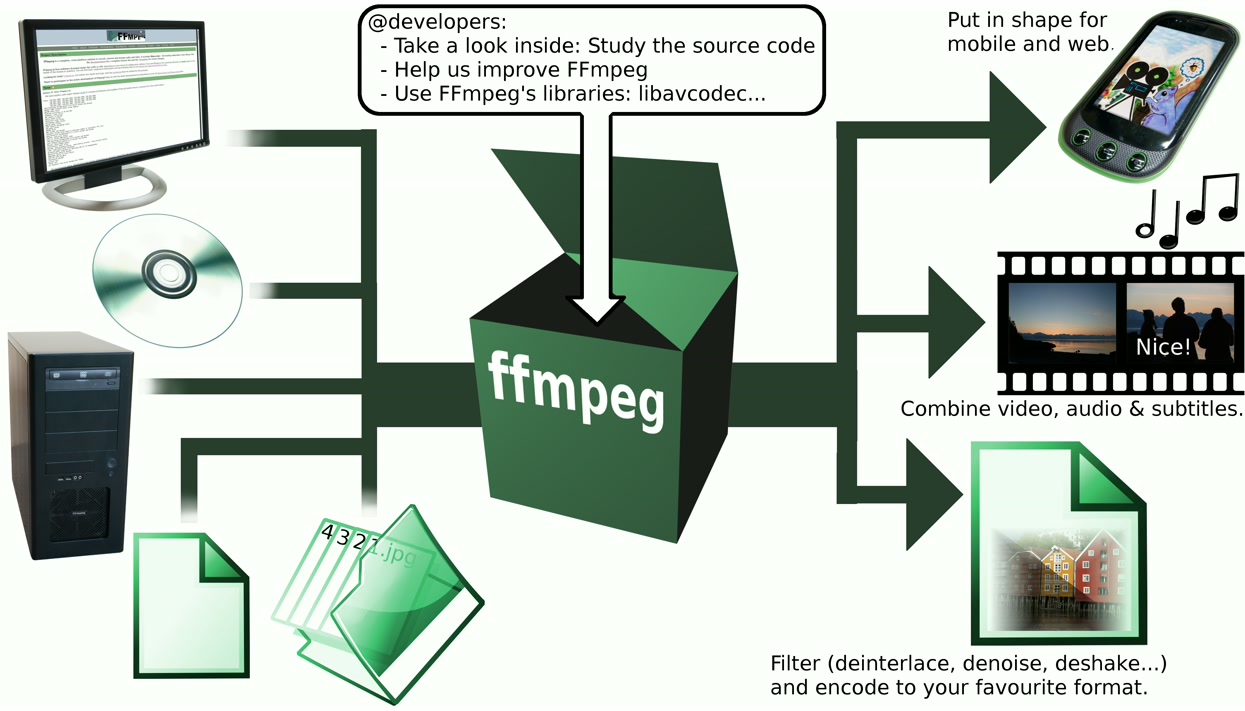
Most of the examples below use stream specifiers.

Stream specifiers include video, audio, subtitles, data, a ttachments.
stream_type_specifier (optional) is a stream specifier which will limit the selection to a specific stream type. input_file_index refers to an input and by default will include all of its streams. map input_file_index:stream_type_specifier:stream_index Using the -map option disables the default stream selection behavior and allows you to manually choose streams. The default stream selection will choose streams based upon specific criteria. For example, if the input has 3 video streams it will only choose 1. Only 1 stream per type will be selected. Default stream selection will not automatically choose all of the streams. If you do not use the -map option then the default stream selection behavior will automatically choose streams. -map 0 -map -0:s Will select all streams from input index #0 (the 1st input) except subtitles. -map 3:s:4 From input index #3 (the 4th input) select subtitle stream index #4 (the fifth subtitle stream). -map 1:a From input index #1 (the 2nd input) select all audio streams. -map 0 From input index #0 (the 1st input) select all streams. map 1:a:2 refers to "second input:audio only:third audio stream". The bottom command includes stream specifiers ( v for video, a for audio) to limit the streams to a specific type. map 1:3 refers to "second input:fourth stream". This is an absolute method of mapping and will choose a specific stream regardless of type.  The top command does not use any stream specifiers. The commands do the same thing, but use different syntax to map streams: The commands in the diagram above will select the video from input0.mp4 and the 3rd audio stream from input1.mkv to output.mp4. The -map option can also be used to exclude specific streams with negative mapping. 5.2.The -map option is used to choose which streams from the input(s) should be included in the output(s). Users can skip – map and let ffmpeg handle stream selection.
The top command does not use any stream specifiers. The commands do the same thing, but use different syntax to map streams: The commands in the diagram above will select the video from input0.mp4 and the 3rd audio stream from input1.mkv to output.mp4. The -map option can also be used to exclude specific streams with negative mapping. 5.2.The -map option is used to choose which streams from the input(s) should be included in the output(s). Users can skip – map and let ffmpeg handle stream selection. 
It also sets the number of output audio streams.įinally, the -map flag in step 5 allows for a custom stream selection in each output file if there are multiple. Similarly, a (default is 0) sets the number of audio streams in each section. Next, we follow with v (default is 1), which sets the number of output video streams. In step 4, the number of files we want to join is in the value of n (default is 2). Map the resulting audio and video streams to the output.Select the actual streams in a specific order: video and audio from the first, second, and third file.Use -filter_complex to select streams from the input files.Here’s a quick rundown of what’s going on in the command: To explain the contact filter, we’ll use start.mkv, body.mkv, and rear.mkv with a single audio stream: $ ffmpeg -i start.mkv -i body.mkv -i rear.mkv -filter_complex \







 0 kommentar(er)
0 kommentar(er)
